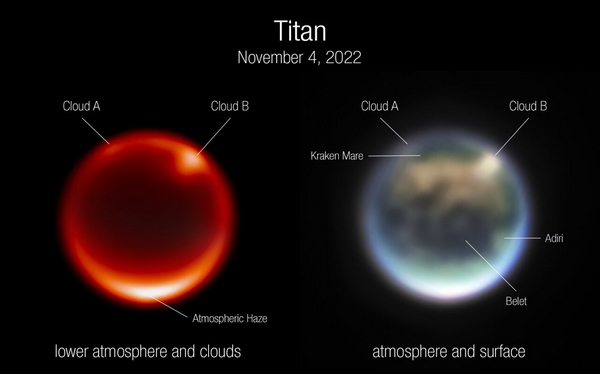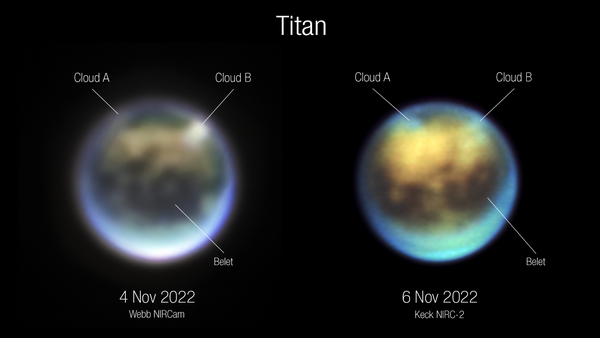We are often used to seeing in images and in the data of James Webb Space Telescope distant worlds and corners of the Universe very distant from the Earth. Among the last examples we can find the image of II ZW 96 (500 million light years) or dei “pillars of creation” in the Eagle Nebula (6500 light years). Even when it came to exoplanets, such as WASP-39 b, it was still a question of observing at 700 light years. But the JWST extension he also looked much closer.

Indeed, in the past the space telescope observed the impact of NASA DART against the asteroid Dimorphos or captured images of Neptune, Mars or Jupiter. In the last few hours, however, new data and images have been released Titanthe moon of Saturn. The satellite is decidedly particular hosting on its surface lakes and seas not of water but of hydrocarbons such as methane and ethane. It is also the only moon in the Solar System to have an atmosphere. In the future this moon will be the subject of NASA’s Dragonfly mission which will use a drone (larger than Ingenuity) that will land in the Selk crater area. Here’s what he found though JWST extension.
The James Webb Space Telescope captures some images of Titan
The observations were made between November 4th and November 6th for a duration of 30 hours, thanks to the tool NIR Cam (near infrared). In the images visible in this news, on the left we see what was detected by JWST extension through a filter that allows you to analyze the lower part of the atmosphere Titan (F212N at 2.12 μm for atmospheric hydrogen). As reported, the brightest areas are clouds found in the northern hemisphere. In the lower area, however, another clear part can be seen, but this would be due to atmospheric haze. Clouds do not have a long duration on this satellite and therefore can form and disappear in a matter of days.
In the image on the right, in false colors, some of the best-known areas of the city have been highlighted moon of Saturn. In particular the Kraken Sea which should be a large expanse of liquid hydrocarbons, Belet instead it is an area with sand dunes of a dark color while Adiri, on the other hand, is particularly bright by its nature. In this case the filters used were F140M, F150W, F200W and F210M, respectively for the frequencies at 1.40 μm, 1.50 μm, 2.00 μm and 2.10, assigning the colors blue, green and red (while the last one is dedicated in particular to the detection of methane).

Comparison of the JWST and the Hawaii Observatory’s NIRC-2 instrument
The researchers have been eagerly awaiting these first images from the James Webb Space Telescope. Thanks to the infrared it is possible to have information on the gaseous composition and thus build more and more precise meteorological models for Titan. After these first images there will be a new observing campaign set between May and June 2023 where NIRCam, NIRSpec and MIRI will be used. In particular for the medium infrared it will be possible to capture data never observed before for Titan.
